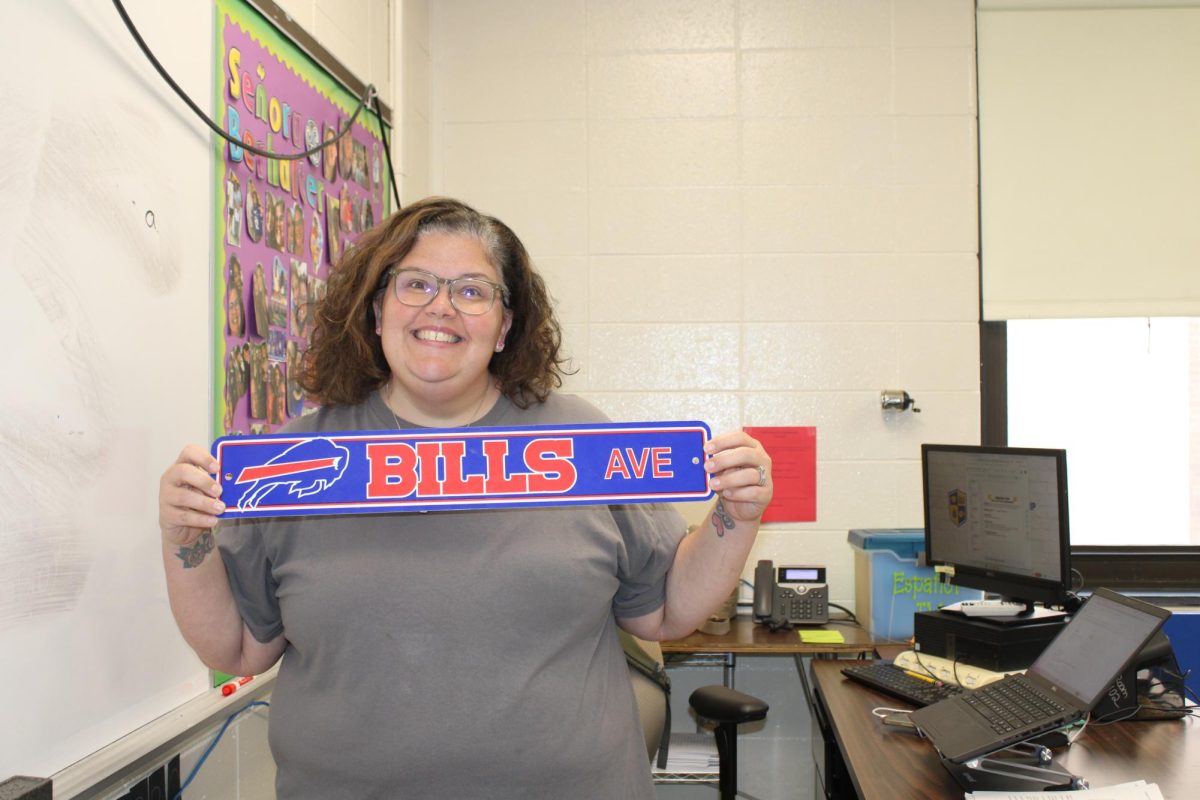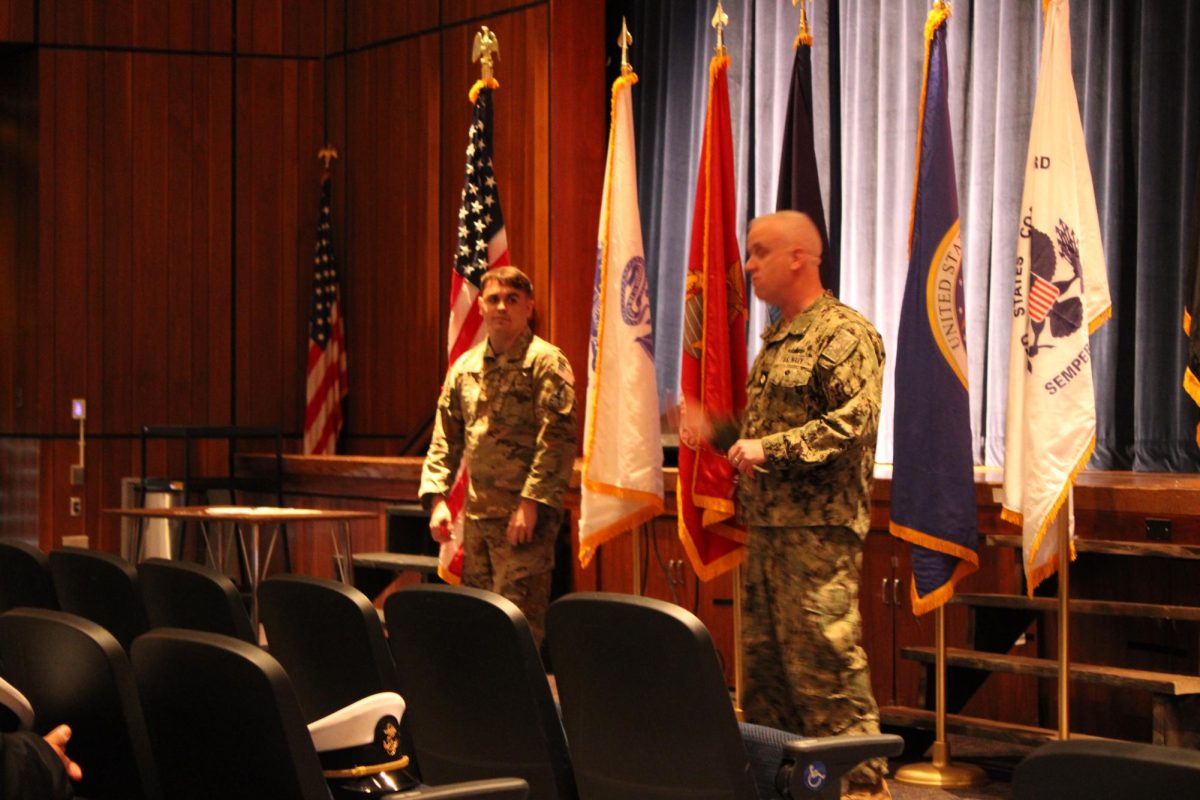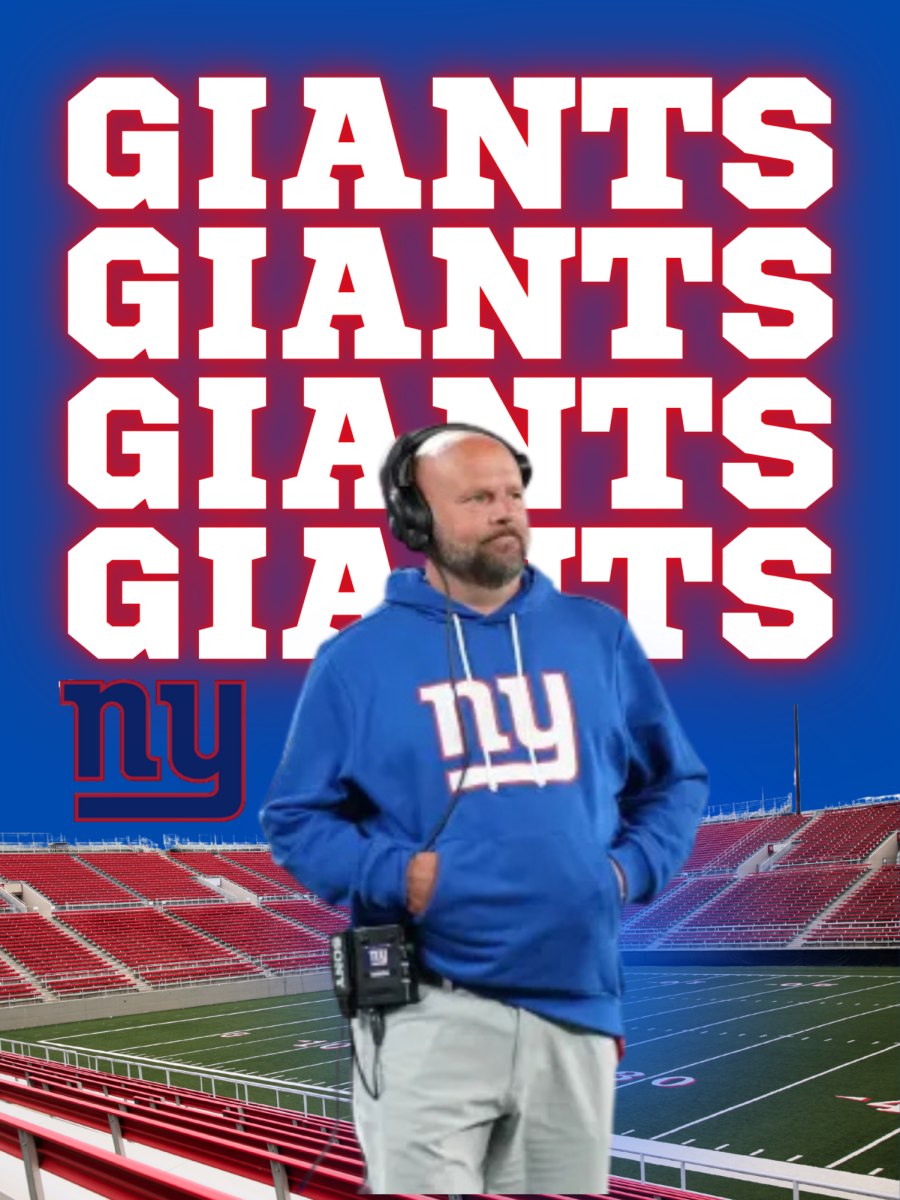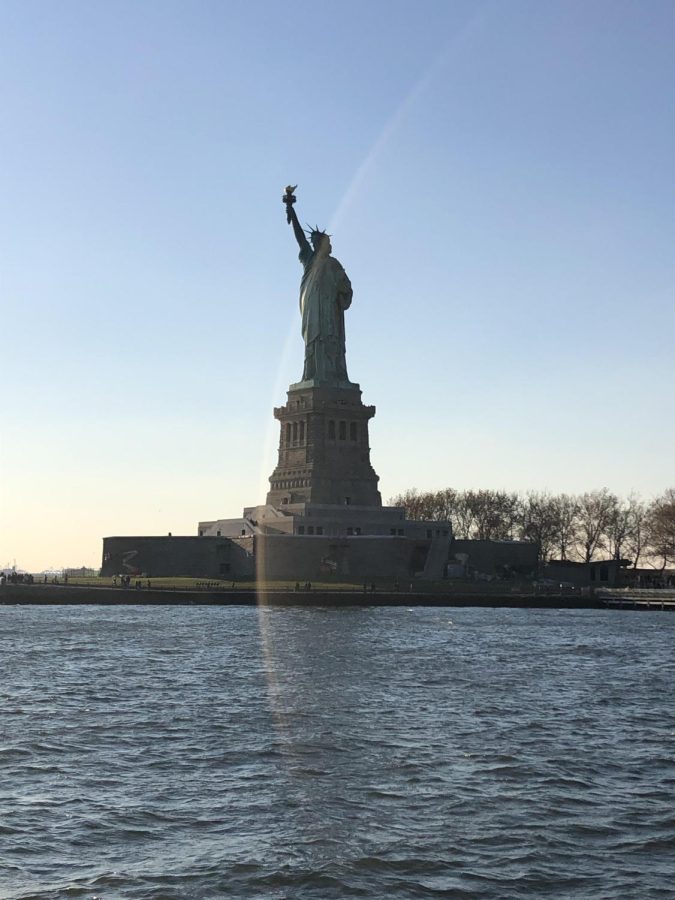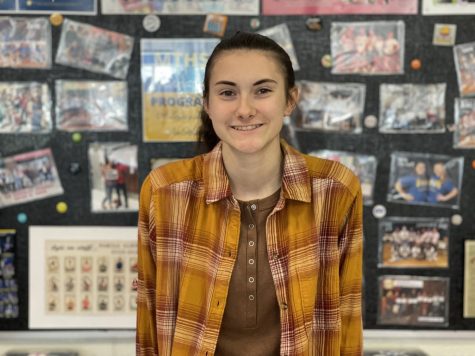Science Club Travels to the Aircraft Carrier Intrepid
On Saturday, November 19, 2022 The Science Club traveled to New York City to explore the Intrepid aircraft carrier and Manhattan aboard a ferry. Read on to hear how it went!
December 13, 2022
The morning of Saturday, November 19th was clear as the Science Club boarded the buses and prepared for the hour and a half trip to NYC. Mrs. P. White led the trip, with chaperones Mrs. Goley, Mr. Conover, and Ms. Vecchione. There were about 100 of us, including chaperones, boarding two large school buses in the 8am sun.
After attendance was taken, the buses departed and the trek to New York City began!
After driving about an hour, they stopped at a rest stop in South Amboy to buy breakfast and stretch their legs. This rest stop is also known as the Jon Bon Jovi rest stop in the Jon Bon Jovi service area, previously known as the Cheesequake service area. Inside this unique rest stop are typical rest stop establishments: Burger King, Starbucks, a pizza place, gift shop, and large bathrooms (that were actually pretty clean). What was different about this rest stop were the Bon Jovi artifacts in two glass cases in the center floor. In these cases are one of the famous singer’s guitars and his Multi-Platinum Sales Award.

Jon Bon Jovi is a famous singer who is an NJ native, Rock and Roll Hall of Fame Inductee, and New Jersey Hall of Fame Inductee. The reason for a random rest stop to be named after him is because Governor Phil Murphy is renaming nine NJ rest stops along the Parkway to NJ Hall of Fame Inductees, to display New Jersey’s best to travelers.
Upon leaving the Jon Bon Jovi rest stop, the Science Clubbers continued the journey, traveling to Manhattan via the underwater Lincoln Tunnel running under the Hudson River. Emerging onto the New York side of the Hudson, a flurry of pigeons open up the view of the beautifully messy City of New York. Delivery bikers wearing big winter gloves in the frigid morning air, street hotdog vendors selling to bundled-up passersbys, dogs of all kinds being walked, and the morning sun reflecting on the huge towering skyscrapers filled their view as the buses weaved around the traffic, one inch at a time.
At around 11am they finally arrived at the Intrepid, parking in a nearby parking lot and crossing a fancy overpass to cross the street and get to the processing center next to the pier the aircraft carrier was parked next to. The processing center checked their bags, where the security guards may have smirked at the amount of ‘traveling candy’ in their bags. After the processing center is the gift shop and cafe, where they bought more snacks and trinkets.
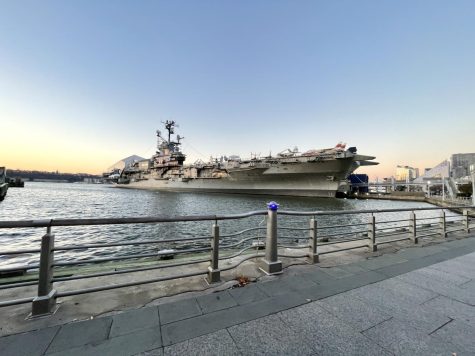
Exploring the Intrepid Museum was unlike any other museum the club has ever visited, mostly due to the fact that the entire museum was on board a World War II era aircraft carrier parked in the Hudson River. To enter the Intrepid, the club had to climb a spiral staircase or take an elevator up to the entrance just below the top deck. Walking into the massive room that lined the bottom of the landing strip deck, whole airplanes were on display, among other huge artifacts and exhibits, with room to spare. Along the walls of the huge space were corridors leading to different levels and exhibits.
Some things on display:
*please note that the Intrepid Museum does not allow pictures of exhibits to be published, so limited images were available for this article
A replica of a Mercury Space Capsule, the real capsule the Intrepid helped recover when it landed from space in the ocean in May of 1962, carrying America’s second man in orbit, Scott Carpenter.
A couple of exhibits on the variety of chairs the Intrepid had while in operation. Chairs include Dental chairs, Ready Room Chairs, Barber Chairs, and Armchairs. Crew on the Intrepid would be there for a while at a time at sea, like a few weeks to a few months, so a dentist was aboard the ship, as well as a barber. These chairs are on display in these exhibits and seen included in other exhibits all over the ship.
An exhibit in the main room showing a triple bunk bed setup the crew slept in. The mattresses were like 3 inches thick, with metal wires supporting the bottom of each shelf-like bunk. A little metal storage cabinet at the foot of each shelf offered space for personal belongings.
In the main room at the far end were simulation pods where you could pilot virtual planes. In these pods, you controlled the planes on screen but actively were turned with the planes in the pod in real life. In other words, when you made the plane do a barrel roll, you did a barrel roll strapped to the inside of the pod in real life. Beware of motion sickness.
There was also a 4D experience across from the simulators, but many thought the simulators were much more fun.
A corridor that led to a room displaying the tools and painted doors of the Intrepid’s Sick Bay. The Sick Bay was the on-board doctor’s office, where the crew had a little fun painting memes of their time on the doors. The paintings were not painted to last, and actually had to be professionally restored by art conservators so they could be on display.
A corridor that led to a Ready Room. Ready Rooms were where the ship’s pilots awaited their missions from their commanders. These rooms were covered in maps, the smell of cigars, pilot gear, and a podium in the front where the commander would hand out missions. In World War II, the Ready Rooms were located just under the deck of the ships, but were later moved farther down a few levels after Kamikaze strikes on the flight deck wiped out a whole Ready Room of 26 people on the Intrepid.
Around the ship were radars, where Radarmen would keep watch on the radar as well as writing down all the radio transmissions. What the Radarmen would look for on the radar would be little blobs of green blinking on the screen indicating a nearby enemy. The Radarmen would write in these enemy aircraft or ships on a map so the crew knew where and how far away the enemy was. The Radar Rooms were kept at a dim light setting to make it easier on the Radarmen trying to see the little green blobs on the illuminated vintage-green computer screens.
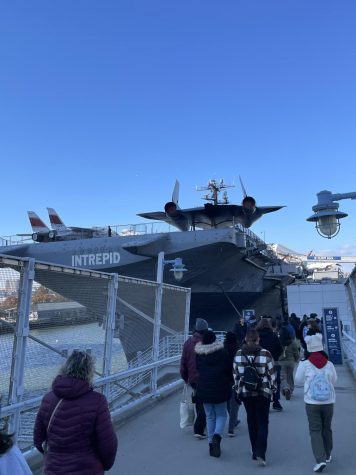
Walking up stairs from the various corridors or by taking the indoor escalator, the flight deck could be explored. On the flight deck were:
The Control Tower, multiple stories tall, home of the Intrepid’s steering wheel (which you were allowed to turn!), a huge compass the size of a dinner plate, and the Captain’s Chair, and yes, it did look like an epic chair. The tower had its own radars, huge maps, and command rooms similar to the ones below decks, but some of these rooms had big windows. The Captain’s Cabin was up there too, with a desk, a clock, a bed on floor-level, and an old telephone.
Also in the Intrepid’s Control Tower were two of its crew from the 1960s, answering questions and telling of their times on the Intrepid during its operational days.
Ms. Veccionne comments: “One of the most interesting things I learned while on this trip was about the American soldiers, the many men and women we lost during battle, and the Intrepid itself. It housed over 2,000 people at a time. The quarters were so close, you can actually walk through the ship and go up to the flight deck and witness the experience first hand. But my most favorite thing was the actual retired Navy Veterans that were on the ship the day we visited. YES! There were Vets on board talking about their personal experiences on the Intrepid and explaining how things worked on the ship. You hear the pride in their voices as they spoke about their fellow soldiers and roles on the vessel, it was really humbling.”
There was a building where aircraft were being restored to be put on display. At this time, an old military helicopter could be seen inside, in pieces, being repaired. On the other side of the flight deck was the massive aircraft elevator, used to load up airplanes on the Intrepid.
A huge building on the flight deck where the Space Shuttle Enterprise was on display. In the same room were glass cases filled with old Star Trek toys, since the Enterprise was named after the fictional Star Trek’s Enterprise Ship. Enterprise was originally supposed to be named the Constitution, but a huge wave of Star Trek fans petitioned the name ‘Enterprise.’ The Enterprise Shuttle was the first of six space shuttles. Enterprise was built in 1976, and was used to glide around Earth’s atmosphere so NASA could figure out how to build the later shuttles suitable for spaceflight. Enterprise never went to space, but the tests it participated in let the later shuttles go to space and carry the materials up to build the International Space Station.
Also on the deck were many airplanes on display, including the predecessor of the SR-71, the world’s fastest jet. The predecessor was called the Lockheed A-12, with a top speed of 2,269 mph, or Mach 3 (three times the speed of sound). The A-12 flew secret CIA intelligence gathering missions in the 1960s.
On the flight deck was a jet that used to be a piece of playground equipment in Wall Township. Mr. Conover recalls, “My favorite part of the trip has two parts: The first was seeing the space shuttle Enterprise. These shuttles were awesome to watch when I grew up in the 1980’s, but even more awesome to see in real life. This is actually the second Shuttle I have seen in person; we also saw the Space Shuttle Discovery during a Science Club trip to Virginia last Spring. My other favorite part of the trip was seeing an aircraft that was actually used as a piece of playground equipment when I grew up in Wall Township. This airplane used to be in a park in the 1970’s and 1980’s, and as kids, we would climb all over it, climb inside of it, etc. I got many cuts and bruises on this airplane. The plane was removed from the park (which is still called “Airplane Park” to this day), and I just assumed it had been scrapped. I was very happy to see that the plane was, in fact, restored to excellent condition and is currently on display on the flight deck of the Intrepid! It was very cool seeing this plane 40 years later, and in much better condition!”
After viewing the flight deck, it was time for lunch. The cafeteria can be found down a corridor leading from the main room below the flight deck. After eating lunch, the Science Club left the Intrepid to board the Circle Line Ferry for a tour of Manhattan.
Aboard the ferry, they saw the Statue of Liberty and Ellis Island from the view of the Hudson River. At the last Science Club field trip, the club explored the Ellis Island Museum and went into the Statue of Liberty.
By now it was sunset, and as the ferry passed the Manhattan skyline, illuminated by the bright setting sun. The tour guide directed attention to particular buildings and bridges, giving a brief history of each.
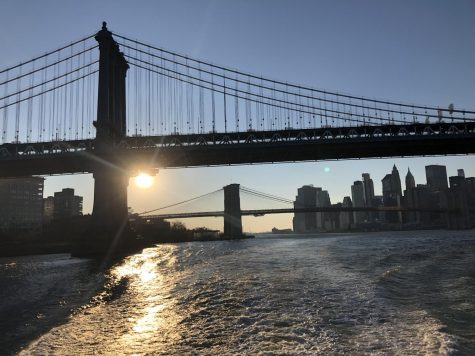
Ms. Vecchione comments, “Favorite part of the trip – the boat ride around Manhattan. The tour guide was very informative and entertaining and it was so interesting to hear about the history of many of the buildings and landscapes that we passed on the ride. Going under the Brooklyn and Manhattan bridge was beautiful at sunset and passing the Statue of Liberty at such a close distance was mesmerizing.”
Perhaps one of the most interesting stories the tour guide told was the story of the Brooklyn Bridge, unofficially called “Emily’s Bridge.” The bridge was built from 1869-1883, with its chief designer John A. Roebling. However, Roebling suffered illness during construction, and was unable to participate in construction. His wife, Emily Warren Roebling took over for him, instructing the assistant engineers on what to do next. She finished the last leg of the bridge’s construction, and to celebrate, she was the first to cross the bridge in a carriage, holding a rooster (as a symbol of victory). Emily received incredible honors for her accomplishment of finishing the (then) longest suspension bridge in the world, including meeting Queen Victoria and attending Czar Nicholas II’s coronation.
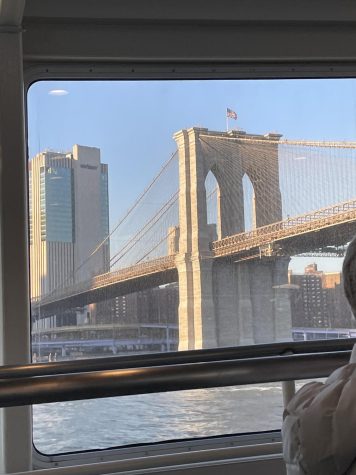
After the ferry, the Science Club boarded the buses, and got to leave NYC with the skyscrapers lighting up the night sky.
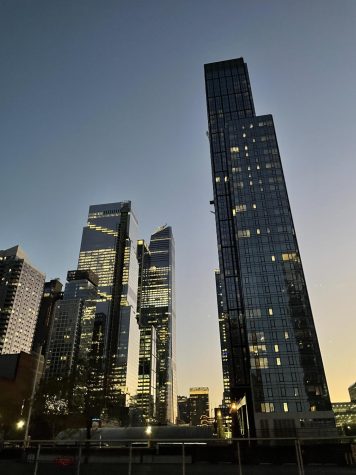
Ms. Vecchione recalls her excitement, “First thoughts on the trip – how awesome our students are! Very well behaved and respectful. Second thoughts – how awesome Mrs. Pat White is for organizing all of these opportunities for our students. I’m so grateful to be asked to attend. Third – what a beautiful day! Everything just worked “according to plan”; weather was great, the company of the students and fellow colleagues was wonderful, and the closing boat ride really captivated the uniqueness that is New York – overall great experience!”
Sources:
What the Science Club experienced, interviews, and my own observations.
Intrepid Sea, Air, and Space Museum: https://www.google.com/search?client=firefox-b-1-d&q=mercury+space+capsule+recovered+by+intrepid#fpstate=ive&vld=cid:d7c4c5c6,vid:XAufxg23nn8
https://www.intrepidmuseum.org/intrepidsjourney
The Navy: https://www.navysite.de/cvn/atc.htm
NASA: https://evert.meulie.net/faqwd/how-many-space-shuttles/
https://www.nasa.gov/pdf/587715main_Timeline_Text_Based_v3.pdf
Space.com: https://www.space.com/16748-international-space-station.html
Brooklyn Bridge Park.org: https://www.brooklynbridgepark.org/places-to-see/emily-roebling-plaza/
NYC.gov: https://www.nyc.gov/html/dot/html/infrastructure/brooklyn-bridge.shtml










